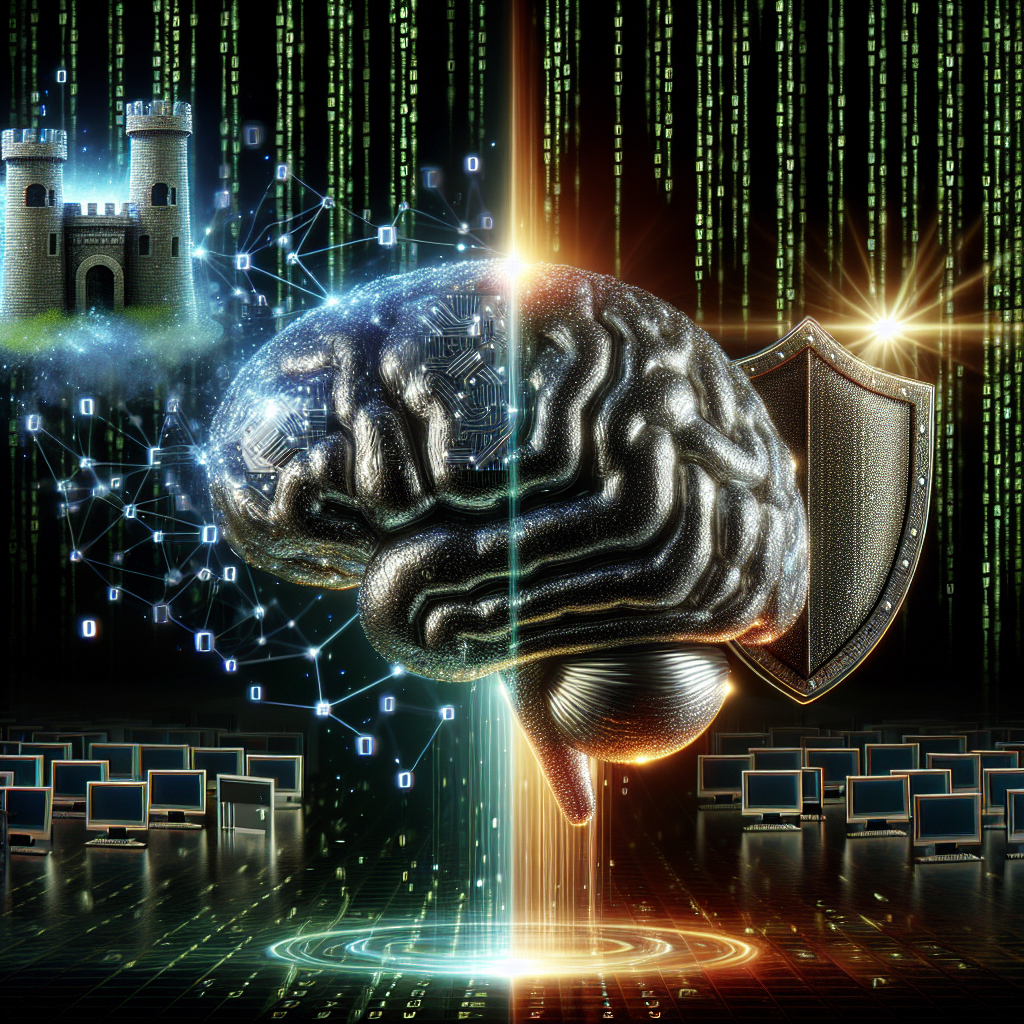AI in Cybersecurity: A Game Changer
In today’s digital world, cybersecurity is more important than ever. With the rise of cyber threats and attacks, businesses and individuals alike are looking for ways to protect their data and information. One technology that is changing the game in cybersecurity is artificial intelligence (AI). AI has the potential to revolutionize the way we approach cybersecurity, making it more efficient, effective, and proactive. In this article, we will explore the role of AI in cybersecurity, its benefits, and the challenges it presents.
What is AI in Cybersecurity?
AI refers to the simulation of human intelligence in machines that are programmed to think and act like humans. In the context of cybersecurity, AI is used to analyze vast amounts of data, identify patterns and anomalies, detect threats, and respond to them in real-time. AI-powered cybersecurity solutions can automate tasks that were previously done manually, such as monitoring network traffic, detecting malware, and responding to incidents.
Benefits of AI in Cybersecurity
1. Proactive Threat Detection: One of the key benefits of AI in cybersecurity is its ability to detect threats proactively. AI-powered systems can analyze data in real-time, detect unusual patterns or behaviors, and alert security teams to potential threats before they can cause harm. This allows organizations to take action quickly and prevent attacks from happening.
2. Enhanced Detection Accuracy: AI can analyze vast amounts of data quickly and accurately, which can improve the detection of threats. AI-powered systems can identify patterns and anomalies that may be missed by human analysts, leading to more accurate threat detection and reduced false positives.
3. Faster Response Time: AI-powered cybersecurity solutions can respond to threats in real-time, allowing organizations to mitigate risks before they escalate. AI can automate incident response processes, such as isolating infected devices, blocking malicious traffic, and quarantining compromised systems, which can help organizations to respond to threats more efficiently.
4. Scalability: AI-powered cybersecurity solutions can scale to analyze large volumes of data and adapt to changing threats. This scalability allows organizations to protect their data and information effectively, even as their networks grow and evolve.
Challenges of AI in Cybersecurity
While AI has the potential to revolutionize cybersecurity, it also presents some challenges that organizations need to be aware of:
1. Lack of Understanding: Many organizations may not fully understand how AI works or how to implement it in their cybersecurity strategy. This lack of understanding can lead to misconfigurations, false positives, and other issues that can undermine the effectiveness of AI-powered security solutions.
2. Data Privacy Concerns: AI-powered cybersecurity solutions rely on vast amounts of data to analyze threats and identify patterns. This data may include sensitive information about individuals or organizations, raising concerns about data privacy and security.
3. Bias and Discrimination: AI algorithms can be biased or discriminatory, leading to unfair or inaccurate outcomes. In the context of cybersecurity, bias in AI algorithms can lead to false positives, false negatives, and other errors that can undermine the effectiveness of security solutions.
4. Complexity: AI-powered cybersecurity solutions can be complex and difficult to implement, requiring specialized skills and expertise. Organizations may struggle to integrate AI into their existing security infrastructure, leading to delays and inefficiencies in their cybersecurity efforts.
FAQs
Q: How does AI improve threat detection in cybersecurity?
A: AI can analyze vast amounts of data in real-time, identify patterns and anomalies, and detect threats proactively. AI-powered systems can automate tasks that were previously done manually, such as monitoring network traffic, detecting malware, and responding to incidents, leading to more efficient and effective threat detection.
Q: What are some examples of AI-powered cybersecurity solutions?
A: Some examples of AI-powered cybersecurity solutions include:
– Machine learning algorithms that analyze network traffic and detect anomalies
– Behavioral analytics tools that identify unusual patterns or behaviors that may indicate a threat
– Autonomous response systems that can respond to threats in real-time, such as isolating infected devices or blocking malicious traffic
Q: How can organizations integrate AI into their cybersecurity strategy?
A: Organizations can integrate AI into their cybersecurity strategy by:
– Assessing their cybersecurity needs and identifying areas where AI can be beneficial
– Investing in AI-powered cybersecurity solutions that meet their specific requirements
– Training their security teams on how to use AI tools effectively
– Monitoring and evaluating the performance of AI-powered security solutions regularly
Q: What are some best practices for implementing AI in cybersecurity?
A: Some best practices for implementing AI in cybersecurity include:
– Ensuring data privacy and security by implementing robust data protection measures
– Monitoring AI algorithms for bias and discrimination and taking steps to mitigate them
– Training security teams on how to use AI tools effectively and integrating AI into existing security processes
– Regularly evaluating the performance of AI-powered security solutions and making adjustments as needed
In conclusion, AI is a game-changer in cybersecurity, offering organizations the potential to improve threat detection, response time, and scalability. While AI presents challenges such as lack of understanding, data privacy concerns, bias, and complexity, organizations can overcome these challenges by implementing best practices and investing in AI-powered cybersecurity solutions. By leveraging the power of AI, organizations can enhance their cybersecurity posture and protect their data and information from evolving threats in the digital age.

